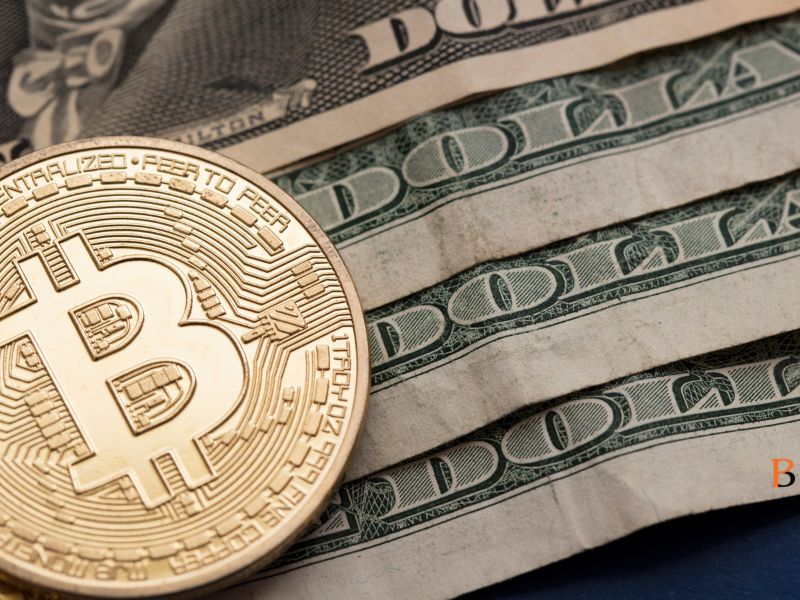.png)
March 7, 2025 at 1:50 AM IST
The European Central Bank cut interest rates once more on Thursday, marking its sixth reduction since June, but cautioned about "phenomenal uncertainty" ahead. Risks such as escalating trade tensions and increased defence spending could stoke inflation, potentially prompting a pause in its policy easing next month. The ECB lowered the deposit rate to 2.5%, acknowledging slowing inflation and weaker economic activity, while signalling that monetary policy is becoming less restrictive as inflation edges closer to its 2% target.
ECB President Christine Lagarde refrained from reiterating her previous stance that further rate cuts were certain, instead highlighting that both a cut and a pause remain possible. "Monetary policy is becoming meaningfully less restrictive," she stated, emphasising the significance of this shift. With inflation at 2.4% last month, the ECB has maintained that restrictive measures will no longer be needed once inflation is firmly on track to meet its target this year.
Data
The US labour market and trade sector are flashing warning signs, with layoffs surging to levels not seen since the last two recessions and the trade deficit hitting a record high in January. According to Challenger, Gray & Christmas, planned job cuts soared by 245% in February to 172,017—the highest since July 2020—driven largely by federal government layoffs, which accounted for 62,242 cuts last month alone. Meanwhile, the Commerce Department reported that the trade deficit ballooned by 34% to an unprecedented $131.4 billion, the largest monthly increase since March 2015, as businesses rushed to import goods ahead of anticipated tariffs. These twin developments highlight the growing economic headwinds facing the US. The surge in layoffs, particularly in the public sector, reflects the strain of policy decisions and budget constraints, while the widening trade gap suggests that trade tensions could weigh heavily on first-quarter growth.
Markets
Overnight
US stocks indexes fell sharply on Thursday as investors worried about the impact of President Donald Trump’s trade policies on companies and the broader economy, while Marvell Technology’s revenue forecast raised concerns about spending on artificial intelligence infrastructure. Automakers General Motors and Ford dropped 2.6% and 0.4%, respectively, while Tesla slid 5.6% after brokerage Baird labelled the electric carmaker a "bearish fresh pick." The Nasdaq Composite closed 10.4% below its December 16 record high, confirming a correction for the tech-heavy index. In a related development, Trump announced a one-month exemption from 25% tariffs for goods from Canada and Mexico covered by the USMCA, a day after exempting automotive goods from the levies.
US Treasury yields on long-dated US government debt rose for a third straight day, with the 10-year Treasury yield climbing 1.5 basis points to 4.282%, as Germany’s plans for increased military and infrastructure spending dampened demand for US bonds. Investors also assessed economic data ahead of Friday’s payrolls report with weekly jobless claims falling more than expected to 221,000. However, the global bond selloff continued, highlighted by the 10-year German Bund yield’s sharpest rise since the 1990s, underscoring ongoing market volatility.
The US dollar faced downward pressure on Thursday, while the safe-haven yen and Swiss franc gained ground as investors grew increasingly risk-averse amid mounting concerns over the potential economic fallout from President Trump’s tariffs. By afternoon trading, the dollar had fallen 0.9% against the yen to 147.65 yen, after earlier hitting a five-month low of 147.31. Meanwhile, the euro dipped slightly by 0.05% to $1.0785, despite earlier reaching a four-month high of $1.0854, putting it on track for its largest weekly gain since May 2009. The ECB’s decision to cut interest rates, as expected, was accompanied by a signal that monetary policy was becoming less restrictive. Traders interpreted this as a hint that another rate cut in April might not be guaranteed, adding further complexity to the global currency landscape.
Brent crude oil prices ended little changed in volatile trading on Thursday, as global benchmark Brent crude closed just below $70 a barrel amid pressure escalating tariffs between the US, Canada, and China as well as OPEC+’s plan to increase production. Brent futures edged up 0.269.46 a barrel, reflecting a market caught between geopolitical tensions and shifting supply dynamics.
| Indicators | Last | Change |
| Dow Jones Industrial Average | 42,579.08 | -0.99% |
| Sensex | 74,340.09 | 0.83% |
| Nifty 50 | 22,544.70 | 0.93% |
| Gift Nifty | 22,557.50 | -0.11% |
| Dollar/Rupee | 87.11 | 0.17% |
| Dollar Index | 104.16 | -0.09% |
| Bitcoin (in $) | 89,930.90 | -0.75% |
| Brent ($/per bbl) | 69.30 | -2.45% |
| Gold ($/per oz) | 2,917.14 | -0.30% |
| 10-year US treasury yield | 4.29% | +1 bps |
| 10-year India gilt | 6.68% | - 3 bps |
Day’s Ledger
Economy
- India weekly forex reserve data
- UK February Halifax house price index
- Eurozone Oct-Dec employment data
- US February employment report
Companies
- AU Small Finance Bank board to discuss fundraising plans
- Bohra Industries board to discuss fundraising plans
- Emkay Global Financial Services board to discuss fundraising plans
- G R Infraprojects board to consider dividend
- Iris Clothings board to discuss fundraising plans
- Navkar Urbanstructure board to consider bonus share issue and stock split
- Sun TV Network board to consider dividend
Policy
- US Federal Reserve Bank Atlanta President Raphael Bostic speaks
Tickers
- ASTRAZENECA receives approval to import formulations for its hyperkalemia drug.
- BAJAJ ALLIANZ GENERAL's gross direct premium fell over 27% MoM in February.
- BHARAT ELECTRONICS has secured orders worth ₹5.77 billion.
- BIOCON BIOLOGICS AND CIVICA collaborate to expand Insulin Aspart access in the US.
- BLUE STAR targets 33-35% market share in commercial refrigeration by FY28.
- BRIGADE ENTERPRISES has launched a premium residential project in Chennai, spanning 6.5 acres with a total development area of 1.4 million square feet.
- CANARA BANK may tap the debt market in two weeks with 10-year Tier-II bonds.
- ERIS LIFESCIENCES to transfer two subsidiaries to Eris Therapeutics for ₹8.62 billion.
- INOX INDIA secures multiple orders worth INR 1.9 billion in January and February.
- INTERGLOBE AVIATION announced non-stop flights to Manchester and Amsterdam.
- JINDAL STAINLESS divests its entire 26% stake in Jindal Coke.
- KALPATARU PROJECTS INTERNATIONAL has secured new orders worth ₹23.06 billion .
- LAURUS LABS has approved an investment of ₹833 million in KRKA Pharma, a joint venture of the company.
- POWER GRID CORPORATION OF INDIA has been declared the successful bidder to establish an inter-state transmission system in Andhra Pradesh.
- RAIL VIKAS NIGAM has received a Letter of Acceptance from South Western Railway for a project worth ₹1.56 billion.
- RAILTEL CORPORATION secures three orders worth a total of INR 3.1 billion.
- TCS has signed an expanded deal with Northern Trust to centralize and standardize its custody operations across 99 direct and global markets.
Must Read
- Next phase of chip incentive scheme in the works, says IT Secretary Krishnan
- Rollback Of Lending Curbs Unlikely To Benefit NBFCs, MFIs Instantly, Says Fitch
- Tighter fiscal policy in works with capex outlay at 3% of GDP
- Greenko promoters in talks with global lenders for $850-million loan
- Taxpayers declare foreign assets worth ₹290 billion under CBDT campaign
- SpaceX Starship blows up near Bahamas after breakup in space
- US trade deficit hits record high in January on imports surge
- Trump signs executive order establishing US strategic bitcoin reserve
- European Central Bank cuts rates again, says policy is becoming ‘meaningfully less restrictive
- US will collapse Iran’s economy by shutting down its oil industry, Treasury secretary says
- Walmart Asks Chinese Suppliers for Major Price Cuts on Trump Tariffs
- Turkey ready to send troops to Ukraine if necessary, source says
Daily Mantra
Each day is a little life: every waking and rising a little birth, every fresh morning a little youth, every going to rest and sleep a little death
Musings

Global Crypto Shift: US Recognizes Bitcoin as Digital Gold
Trump’s Executive Order creates a Strategic Bitcoin Reserve, locking up 200K BTC ($17.4B) seized from criminals. No sales, no taxpayer cost--just HODL. Bitcoin is now officially a US strategic store of value.
Market Impact
- BTC Legitimized – Gov’t backing = institutional confidence.
- Supply Shock – 200K BTC off-market = bullish pressure.
- Regulatory Shift – Clearer U.S. crypto stance = potential policy shifts.
A separate Digital Asset Stockpile (ETH, XRP, ADA, SOL) will hold seized non-BTC assets, but only BTC will be actively acquired via budget-neutral strategies.
Bottom Line? US just moved Bitcoin into the big leagues. Other nations may follow. The game has changed. - Chetan Chandak
Chetan is a published author and a dabbler in mysticism. By day, he trades currency derivatives at an Indian private bank; after hours, he delves into ideas beyond the numbers. His musings—part reflection, part curiosity—are his own and don’t represent views of his bank




